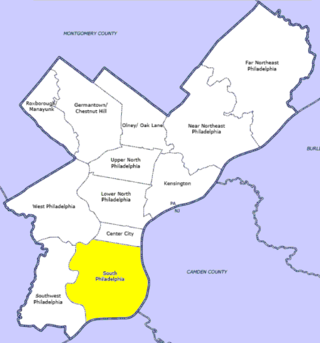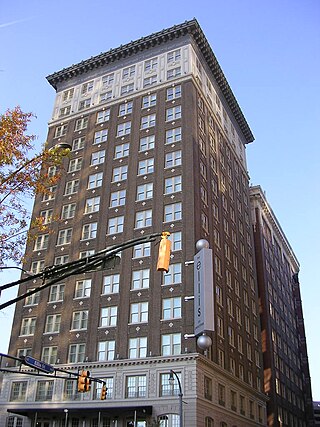Related Research Articles

The Cocoanut Grove fire was a nightclub fire which took place in Boston, Massachusetts, on November 28, 1942, and resulted in the deaths of 492 people. It is the deadliest nightclub fire in history and the third-deadliest single-building fire. The Cocoanut Grove was one of Boston's most popular nightspots, attracting many celebrity visitors. It was owned by Barnet "Barney" Welansky, who was closely connected to the Mafia and to Mayor Maurice J. Tobin. Fire regulations had been flouted: some exit doors had been locked to prevent unauthorized entry, and the elaborate palm tree décor contained flammable materials. The air-conditioning used flammable gas because of the wartime shortage of Freon.

The MGM Grand fire occurred on Friday, November 21, 1980, at the MGM Grand Hotel and Casino, located on the Las Vegas Strip in Paradise, Nevada. The fire killed 85 people, most through smoke inhalation. The fire began from a refrigerated pastry display case in one of the restaurants, located on the first floor. Fire engulfed the resort's casino, and smoke travelled into the hotel tower.

On Monday, December 1, 1958, a fire broke out at Our Lady of the Angels School in Chicago, Illinois, shortly before classes were to be dismissed for the day. The fire originated in the basement near the foot of a stairway. The elementary school was operated by the Archdiocese of Chicago and had an enrollment of approximately 1600 students. A total of 92 pupils and 3 nuns ultimately died when smoke, heat, fire, and toxic gases cut off their normal means of egress through corridors and stairways. Many more were injured when they jumped from second-floor windows which, because the building had a raised basement, were nearly as high above ground as a third floor would be on level ground.

MS Scandinavian Star, originally named MS Massalia, was a car and passenger ferry built in France in 1971. The ship was set on fire on 7 April 1990, killing 159 people. The official investigation determined the fire had been caused by a convicted arsonist who died in the blaze. This finding has since been disputed.

The Garley Building fire took place on 20 November 1996 in the 16-storey Garley commercial building located at 232–240 Nathan Road, Jordan, Hong Kong. The fire caused 41 deaths and 81 injuries. It is considered the worst building fire in Hong Kong during peacetime. The fire damaged the bottom two floors and the top three floors of the building, while the middle floors remained relatively intact.

City of Houston Fire Department (HFD) is the agency that provides fire protection and emergency medical services for the city of Houston, Texas, United States, the fourth largest city in the United States. HFD is responsible for preserving life and property for a population of more than 2 million in an area totaling 654 square miles (1,690 km2). The department is the largest fire department in the state of Texas.

The JPMorgan Chase Building, formerly the Gulf Building, is a 37-story 130 m (430 ft) Art Deco skyscraper in downtown Houston, Texas. Completed in 1929, it remained the tallest building in Houston until 1963, when the Exxon Building surpassed it in height. The building is the Houston headquarters of JPMorgan Chase Bank, and was formerly the headquarters of Texas Commerce Bank.
The Marina Torch, also known as Dubai Torch, Dubai Torch Tower, and The Torch, is a residential skyscraper in Dubai Marina in Dubai, United Arab Emirates. It is 352 metres (1,155 ft) tall, with 86 floors above ground and 4 below, and was the tallest residential building in the world on its completion in 2011, surpassing Q1 in Gold Coast, Australia.

The Childers Palace Backpackers Hostel fire on 23 June 2000 killed 15 backpackers – nine women and six men – at the former Palace Hotel in the town of Childers, Queensland, Australia, which had been converted into a backpacker hostel. Robert Paul Long was arrested for lighting the fire and charged with two counts of murder and one count of arson. He was later sentenced to life imprisonment.

The 1913 Binghamton factory fire occurred on July 22, 1913, on the premises of the Binghamton Clothing Company, in Binghamton, New York. It destroyed the Wall Street building in less than 20 minutes, killing 31 of the more than 100 people inside. Though not as deadly as the Triangle Shirtwaist Factory fire in 1911, it put even more pressure on New York officials to strengthen life safety codes, increase funding for more inspectors, and increase penalties for violations.

A refinery owned by Gulf Oil Corporation in Philadelphia, located at Girard Point on the Schuylkill River in South Philadelphia, caught fire on Sunday, August 17, 1975. This incident grew into an 11-alarm fire, not brought under control until 24 hours later, and resulted in the death of eight firefighters of the Philadelphia Fire Department (PFD), injuries to 14 other firefighters, and the loss of four PFD vehicles.

The Penhallow Hotel fire was a suspected arson attack that occurred in Newquay, Cornwall on 18 August 2007. Three people were killed and it was reported as the worst hotel fire in the United Kingdom in nearly 40 years. The hotel was a well-known hotel for holiday makers ranging from families to older residents. It had been built in Island Crescent between 1912 and 1917, and had been altered more than once. The building had a wooden fire escape at the rear, and a central light shaft running from the ground floor up to the roof in the centre of the hotel. Both of these aspects of the building played a dramatic role in the outcome of the fire. Many of those that escaped the fire were elderly holiday makers.
The 1978 Holiday Inn fire broke out at a Holiday Inn hotel located at 1525 West Ridge Road in the town of Greece, New York, United States, on November 26, 1978. The fire was considered notable enough by the National Fire Protection Association (NFPA) and the Center for Fire Research to document the fire in their 1979 publications. In the end, ten people were killed and 34 injured; seven of the fatalities were Canadian nationals. In 2008, the NFPA listed the 1978 Holiday Inn fire as one of only three dozen or so fires which killed ten or more people in the U.S. between 1934 and 2006.

The Kerns Hotel fire of December 11, 1934, in Lansing, Michigan, United States, killed 34 people, including seven Michigan state legislators, and according to the Lansing Fire Department, was the worst fire disaster in the history of Lansing. The fire occurred around 5:30 am and spread rapidly through the building's wooden interior, trapping many of the hotel's 215 guests in their rooms and forcing them to escape via fire ladders or life nets. In addition to the fatalities, 42 more people, including fourteen firemen, were injured in the fire, which was thought to have been caused by a carelessly discarded cigarette.

The Winecoff Hotel fire, of December 7, 1946, was the deadliest hotel fire in American history, killing 119 hotel occupants, including the hotel's original owners. Located at 176 Peachtree Street in Atlanta, Georgia, the Winecoff Hotel was advertised as "absolutely fireproof". While the hotel's steel structure was indeed protected against the effects of fire, its interior finishes were combustible and the building's exit arrangements consisted of a single stairway serving all fifteen floors. All of the hotel's occupants above the fire's origin on the third floor were trapped, and the fire's survivors either were rescued from upper-story windows or jumped into nets held by firemen.

The Southwest Inn fire in Houston, Texas on May 31, 2013 was a fire in an Indian restaurant that spread to an adjoining hotel. The fire claimed the biggest casualty loss for the Houston Fire Department since its inception. Four firefighters were killed and 13 others were injured that day while fighting the five-alarm fire at the Southwest Inn located in Southwest Houston. On March 7, 2017, Captain Bill Dowling, who lost both his legs battling the fire in 2013, died of complications from his line-of-duty injuries.
On 18 March 2018, a fire broke out at the Manila Pavilion Hotel in Manila, Philippines. The hotel, located in the Ermita district of Manila, was filled with foreign tourists at the time of the fire who were mostly able to evacuate through the hotel's fire exits. The fire, burning on the lower floors of the hotel, sent smoke upward and trapped some employees and guests as it spread throughout the complex.

The Arcadia Hotel fire occurred on December 3, 1913 in a flophouse on the corner of Washington and Laconia Streets in Boston's South End. The fire killed 28 persons, making it the deadliest in Boston at that time, passing the Great Boston Fire of 1872.
References
- 1 2 3 4 5 Arnold, Robert. "Remembering the victims of Houston's deadliest fire". www.click2houston.com. Retrieved 2018-09-02.
- ↑ Cox, Mike. Texas Disasters: True Stories of Tragedy and Survival. Globe Pequot Press, Sep. 2006. pp 121+.
- 1 2 Houston, TX Gulf Hotel Fire, Sept 1943 at GenDisasters.com
- 1 2 3 Nash, Jay Robert (1977). Darkest hours: A narrative encyclopedia of worldwide disasters from ancient times to the present . Pocket Books. pp. 224. ISBN 978-0671790042.
- ↑ Smith, Tristan (2015). Houston Fire Department (Images of America). Arcadia Publishing. p. 34. ISBN 978-1467132985.
- ↑ "Gulf Hotel Fire". World History Project. Retrieved 2018-09-02.
- ↑ McDonald, Thomas A and Mellott, F. Scott, eds. Houston Fire Department: 1838-1988. Taylor Publishing, 1988.